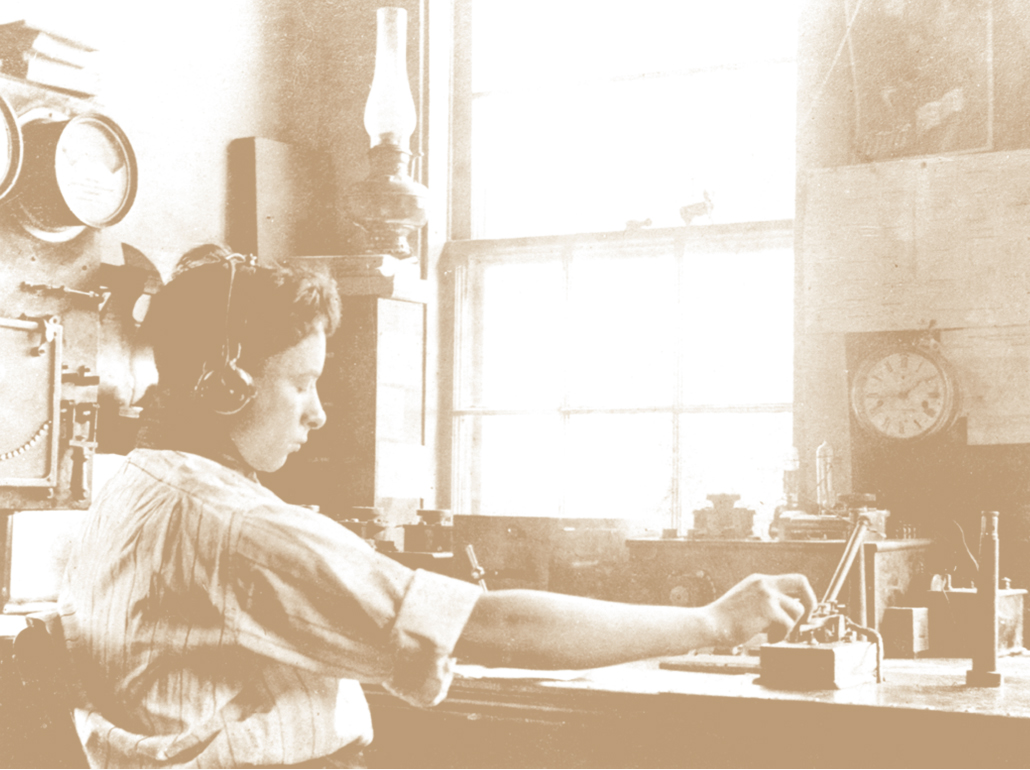Sarnoff and NBC: Building the “Blue” and “Red” Networks
“I have in mind a plan of development which would make radio a ‘household utility’ in the same sense as the piano or phonograph. The idea is to bring music into the house by wireless.”
DAVID SARNOFF, AGE 24, 1915 MEMO
After Lee De Forest, David Sarnoff was among the first to envision wireless telegraphy as a modern mass medium. From the time he served as Marconi’s personal messenger (at age fifteen), Sarnoff rose rapidly at American Marconi. He became a wireless operator, helping to relay information about the Titanic survivors in 1912. Promoted to a series of management positions, Sarnoff was closely involved in RCA’s creation in 1919, when most radio executives saw wireless merely as point-to-point communication. But with Sarnoff as RCA’s first commercial manager, radio’s potential as a mass medium was quickly realized. In 1921, at age thirty, Sarnoff became RCA’s general manager.
After RCA bought AT&T’s telephone group network (BCA), Sarnoff created a new subsidiary in September 1926 called the National Broadcasting Company (NBC). Its ownership was shared by RCA (50 percent), General Electric (30 percent), and Westinghouse (20 percent). This loose network of stations would be hooked together by AT&T long lines. Shortly thereafter, the original telephone group became known as the NBC-Red network, and the radio group (the network previously established by RCA, GE, and Westinghouse) became the NBC-Blue network.
Although NBC owned a number of stations by the late 1920s, many independent stations also began affiliating with the NBC networks to receive programming. NBC affiliates, though independently owned, signed contracts to be part of the network and paid NBC to carry its programs. In exchange, NBC reserved time slots, which it sold to national advertisers. NBC centralized costs and programming by bringing the best musical, dramatic, and comedic talent to one place, where programs could be produced and then distributed all over the country. By 1933, NBC-Red had twenty-eight affiliates and NBC-Blue had twenty-four.

Network radio may actually have helped modernize America by de-emphasizing the local and the regional in favor of national programs broadcast to nearly everyone. For example, when Charles Lindbergh returned from the first solo transatlantic flight in 1927, an estimated twenty-five to thirty million people listened to his welcome-home party on the six million radio sets then in use. At the time, it was the largest shared audience experience in the history of any mass medium.
David Sarnoff’s leadership at RCA was capped by two other negotiations that solidified his stature as the driving force behind radio’s development as a modern medium: cutting a deal with General Motors for the manufacture of car radios (under the brand name Motorola) in 1929, and merging RCA with the Victor Talking Machine Company. Afterward, until the mid-1960s, the company was known as RCA Victor, adopting as its corporate symbol the famous terrier sitting alertly next to a Victrola radio-phonograph. The merger gave RCA control over Victor’s records and recording equipment, making the radio company a major player in the sound recording industry. In 1930, David Sarnoff became president of RCA, and he ran it for the next forty years.